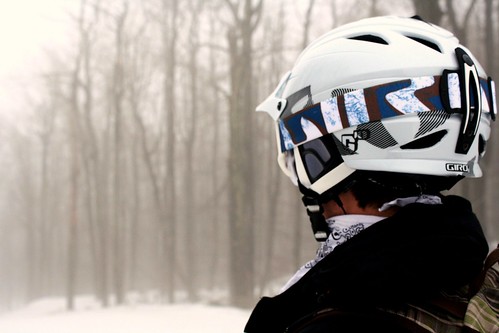CIO Leadership Stories - Lead By Example
post by Chris Curran on March 29, 2010This is the second of three leadership stories I’ve been reflecting on aided by the brisk mountain air during Spring Break last week. If you missed it, here is the first story about learning to ski and learning to learn. I hope these stories provide some inspiration for you and your teams.
Helmets Are A No-Brainer
When my wife and I started to ski together with our sons, we decided that we would wear helmets since we were going to ask the boys to do it also. You know, set a good example for them. Actually, she reminded me that she wore a helmet a few years before we started with the boys.
It doesn’t take too much thinking to realize that it’s just a good personal choice, too; just take a look at the wide range of speeds and skill levels on any green or blue slope. Just as with seat belts, you can justify it by thinking, “It’s not about me; it’s about the other knucklehead,” even if deep down inside you also realize that nobody is perfect and you might just make a mistake someday. After all, recreational skiers travel at speeds around 20-30 MPH. The skiing-related deaths of Sonny Bono, Michael Kennedy and Natasha Richardson are public examples of what can happen.
According to ski-injury.com, the Consumer Products Safety Commission published a study in 1999 reporting that about 7,000 injuries on the slopes could have been prevented or reduced in severity with helmets. I’m not sure how much this has reduced, but it certainly has not been eliminated. Last year, the Vail Resorts properties mandated helmet use for its employees and required them for children in lessons. Whether this move was motivated by a general interest in improving safety or reduction of insurance or workers comp claims, it indicates that some injuries are still happening.
If you are a skier or boarder you will notice that while most/all children are wearing helmets, many adults still don’t - even those who require their kids to wear one. Why is this? Is it an issue with fashion, comfort, visibility or expense - or all of the above? Even if you aren’t sold on the research and statistics, why risk it?
Lead by Example
What happens when the children stop taking lessons? Are the “no helmet” parents going to tell their kids that they don’t have to wear their helmets? Or that they should but don’t have to anymore when they are adults? When the kids are off skiing or boarding with their friends, will they conveniently forget their helmets at the lodge after lunch?
As a parent, it’s a no-brainer for me. My wife and kids are top priority, so I want to personally be safe and want to model the behaviors I want them to display. While I am sold on helmets, I’m not trying to push them on you. I’m only presenting this as an example of modeling good behavior - your family and co-workers will look at what you do more than what you say.
How Can a CIO Set a Good Example?
It’s critical that as a business leader, you model the behaviors you want your teams to develop. Think about some of the things that you ask your leaders to do that you may not do consistently or at all yourself?
As one example, think about how you run meetings:
- Do your meetings start and stop on time?
- Do they have clear agendas attainable in the allotted time?
- Do you send materials out beforehand so the meetings can focus on the meat and not getting up to speed?
- How long does it take someone to get on your calendar for a meeting?
Now, think about how often you criticize others for ineffective meetings.
I’ve been watching a series of basketball coaching videos by the Hubie Brown. In one he talks about his philosophy for running practices. If he sets 1:15 for a practice, he finishes in one hour-fifteen on the dot. He says that in his experience, if practices run over, then the players will start to cheat on the drills - that he won’t get the most out of them anymore.
What can you do to better model behaviors for your organization?





Pingback: Tweets that mention CIO Leadership Stories - Lead By Example — CIO Dashboard -- Topsy.com()
Pingback: The Ultimate High Performing Teams — CIO Dashboard()